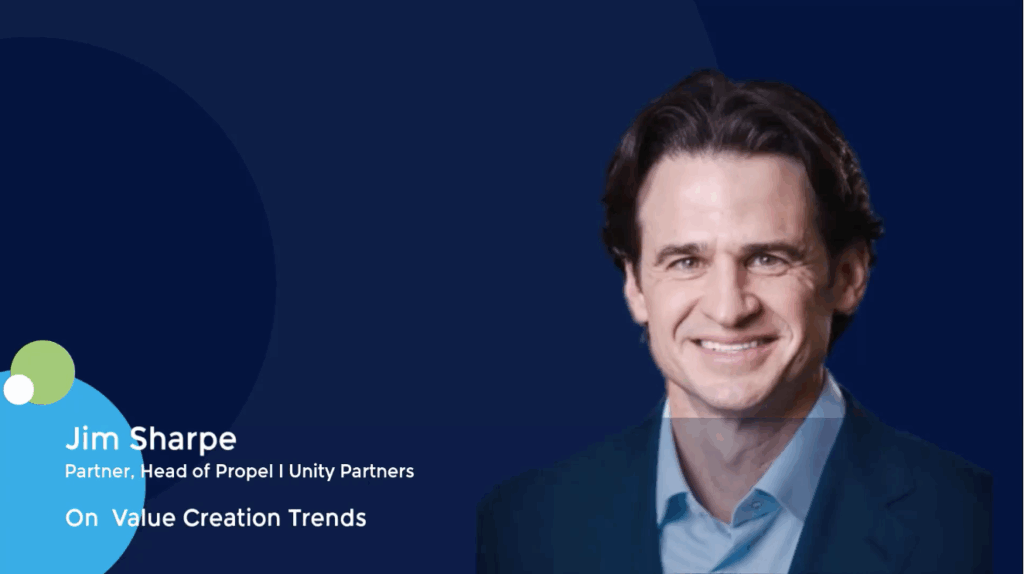Australia’s Crescent Capital Partners goes multi-strategy – GP Profile
Strategic expansion by private equity firms is typically measured and incremental. Crescent Capital Partners isn’t doing that. After 25 years of pursuing a solitary Australia and New Zealand mid-market buyout strategy, the Sydney-based firm is moving into private credit, public equities, and small-cap consumer healthcare private equity – all at the same time.
This is not by design, according to Michael Alscher, Crescent’s founder and managing partner. The firm has considered adding new funds before. It is only now that the criteria – having the right strategy and the right people to execute it – have been met, and it’s purely serendipitous that they’ve been met in three separate verticals.
“Unless there’s a competitive advantage in how we are going to do something that would drive a strategy in which we feel we can outperform, we don’t want to do it. And even if we find that strategy, we don’t want to disturb the existing team from what they are doing in private equity. Other groups drop people in from their core strategy, but we don’t want to do that,” Alscher said.
“So, the question is can we find people that share that cultural approach to engagement and have a strong sense of alignment around how we work?”
Russel Sinclair, formerly head of leveraged finance at Westpac [ASX:WBC] and a partner at PwC, is that person for private credit. Crescent is currently in the market with two funds, one focused on senior secured loans and the other on structured credit. Meanwhile, Simon Birrell, who spent four years at Crescent before moving to the US to work for a hedge fund, has rejoined to lead listed equities.
Two investment professionals – Ondrej Ruzicka and Giuseppe Valletta – were recruited from L Catterton to launch the consumer healthcare strategy. The firm is looking to raise a fund of AUD 250m (USD 158m), according to two LPs briefed on the matter.
One of the LPs expressed surprise that Crescent is returning to consumer, albeit with a healthcare lens, citing the exclusion of consumer from the flagship funds because investments didn’t perform as well as those in other sectors. The impetus to add new strategies, however, is in keeping with the behaviour of leading middle-market private equity firms across the region.
“Managers that have perhaps reached a cap in terms of how much they can grow under their flagship strategies without diluting those strategies naturally think about how they can leverage their brand and networks in other verticals,” the LP said, referencing Advantage Partners in Japan and ChrysCapital Partners in India.
Going deeper
Consumer healthcare represents a logical expansion given that healthcare accounts for approximately half of Crescent’s investment activity to date. In the firm’s sixth fund, which closed on AUD 800m in 2018, there were nine investments, four of them healthcare. Two years after raising AUD 1bn for Fund VII, four deals have closed and a fifth is in due diligence. Three are in healthcare.
Those step-ups in fund size with each vintage contributed to the decision to launch a dedicated consumer health strategy. Crescent’s minimum equity cheque for an individual deal is now AUD 60m, which means certain interesting opportunities – often shared with the firm by virtue of its long track record in the sector – are too small to address.
At the same time, Crescent recognised a distinct theme around consumerisation at the intersection of health and wellness. This could feasibly encompass personal care and skincare, food and beverage, pet products and services, and hospitality, travel, and lifestyle.
“Consumers are taking more ownership over their health and how they think about health, and the derivatives of that are wide-ranging,” said Alscher. “It’s one of the big emerging trends we see, but we must think about how to step into that space and have a slightly different lens on it. The growth rates of some of these businesses are much higher than traditional healthcare.”
Through the flagship funds, Crescent has invested in almost every segment of healthcare, from primary care and diagnostic imaging to clinical research and mental health. Pattern recognition is important whether predicting the likely evolution of Australia’s clinical trials value chain or identifying familiar value creation angles – or strategic pitfalls – in corporatising clinician practices.
The firm has rolled out GP practices and rolled up dentistry practices. Consolidation is expected to remain a prevalent theme in healthcare services for the next 15 years as more independent operators reach retirement age and find their businesses are too big to sell to the younger generation of practitioners and too small to sell to large corporates.
On one hand, penetration of existing segments is low; Alscher observed that National Dental Care (NDC) is a market leader yet still has a single-digit share. On the other, the corporatisation and business model equitisation that is already very visible in segments like radiology clinics will spread into new areas. Healthcare training facilities, for example, are seen as ripe for transformation.
The trick is not just having the capabilities to assemble small pieces into a greater whole but also selling the proposition to clinicians who represent the bulk of business value. There have been numerous instances in the Australian market of discord between investors and clinicians.
“The problem is private equity treats it as an investment. If you start by focusing on the financial proposition and miss the fact you’re dealing with patients, you will lose the hearts and minds of your clinicians, and without that, you will never build a business,” said Alscher.
“We talk to them about how we can build infrastructure around them to optimise what they are doing from a clinical perspective, and we talk to them about patient journeys and outcomes. Normally, we find that when we do that, we can create a financially compelling proposition.”
Adding value
Moreover, this sector expertise feeds an understanding that sometimes it pays not to invest at all. In 2021 and 2022, nearly USD 115bn was deployed in Australia and New Zealand healthcare, more than the prior five years combined, according to AVCJ Research. Crescent exited two businesses during this period – Nucleus Network and PRP Diagnostic Imaging – but largely kept its powder dry.
“Over the course of nearly two years, we did one transaction in healthcare because we couldn’t get anything done at the right value in terms of our risk-return paradigm. We’ve seen that pressure come off in the last couple of years as GPs have either pulled out of healthcare or become less aggressive, and so we’ve done more investments,” Alscher added.
“We don’t have a hard and fast rule around deployment in healthcare. It’s always about value.”
Irrespective of sector, Crescent’s 30-person investment team draws on prior experience in management consulting and running companies. There is no standalone operations function; the partner who presents an opportunity to the investment committee is expected to lead execution.
Collective resources come into play when pursuing specific objectives, such as overseas market entry, product rationalisation, or competitor benchmarking. Asked how the firm’s approach to value creation differs from that of industry peers, Alscher emphasizes enablement: helping management teams make decisions faster by providing information they wouldn’t otherwise have.
In BreatheSafe, a manufacturer of air filtration systems for industrial machinery, Crescent saw a company with global-leading intellectual property that had yet to deliver on its international expansion potential. Since investing in 2023, it has helped BreatheSafe make a bolt-on acquisition in the US and appoint a range of distributors to cover the Americas.
From a sourcing perspective, the process was typical of how Crescent approaches industrials and services: target industries with attractive structural dynamics and thematic needs; identify businesses that have competitive advantages; engage directly with owners and management; and build relationships that may ultimately lead to investment opportunities.
“We have done this time and time again,” said Alscher. “We have team members dedicated to business development, and we are very thematic in what we look at. We track businesses for long periods of time – sometimes these conversations go on for five years.”
This extends to revisiting former portfolio companies. Crescent backed Metro Performance Glass (MPG) in 2012 and took the New Zealand-based business public two years later. Now, in response to changing market conditions, the firm is proposing a merger with Australia’s Viridian Glass, which it acquired in 2018. The matter is currently being assessed by antitrust authorities.
Paths to liquidity
MPG is one of seven IPOs Crescent has completed to date. The bulk of its exits are to strategic investors. “There tends to be quite a lot of competitive tension with global strategics and financial sponsors,” said Alscher. “Global strategics look at a business and say, ‘I want to own it and if it goes to private equity, it will come back in four years’ time, and I will just have to pay more for it.’”
However, private equity is enjoying more success than before: Nucleus Network and PRP Diagnostic Imaging, for example, were sold to Blackstone [NYSE:BX] and IFM Investors, respectively. Alscher sees this as a function of the development of private equity as an asset class – and the broader shift from public to private markets – and large pan-regional sponsors looking to do more in Australia.
GP-led secondaries represent another industry evolution, and Crescent is an active participant. NDC and staffing business Healthcare Australia have both been transferred to single-asset continuation vehicles in recent years. The former transaction was led by a group of superannuation funds, the latter by Roc Partners and Ardian.
“It doesn’t suit every asset, and you have to be mindful of where you are in your fund cycle,” said Alscher. “If you have plenty of time to go on your fund and you’re trying to line up an asset for a continuation vehicle, LPs will want to know why you aren’t holding it for another 2-3 years. It really only works with quality assets and when your fund is near the end of its life.”
Crescent will return to market with its eighth flagship fund in 2026. By then, investors will have a sense of how it functions as a multi-strategy GP. The LP noted that, ahead of Fund VII, investors got comfortable with the notion of Alscher spending more time on general management, and the likes of Daren McKennay, a partner focused on healthcare, increasingly prominent on the deal side.
Questions may be raised about succession planning in the runup to Fund VIII, but this is unlikely to disrupt the process. “At the end of the day, if the returns continue to be in the same area, the next fundraise will be easy for them,” the LP said, observing that all Crescent’s funds to date have ranked in the top quartile for their respective vintages.
Asked about bench strength and talent retention, Alscher pointed to an average tenure of 19 years within the firm’s six-strong partner group and clear deal attribution in the wider investment team. When Crescent does make senior external hires, they tend to be business operators who have previously worked on at least one portfolio company, in some cases as CEO.
“You can’t run a business like this and be as successful for as long as we have with just one person,” he added. “So much of that success is based on transparency, compliance, structure, a process – almost the Crescent way. It’s no longer personalised. I’ve really tried to focus on that, in the last 15 years in particular.”












